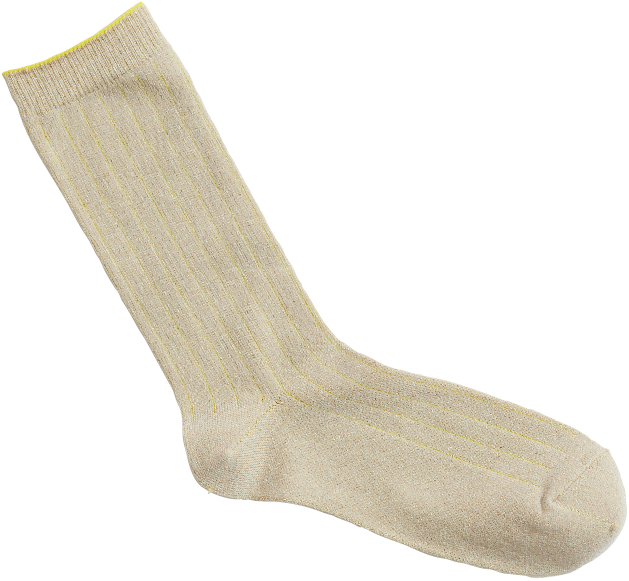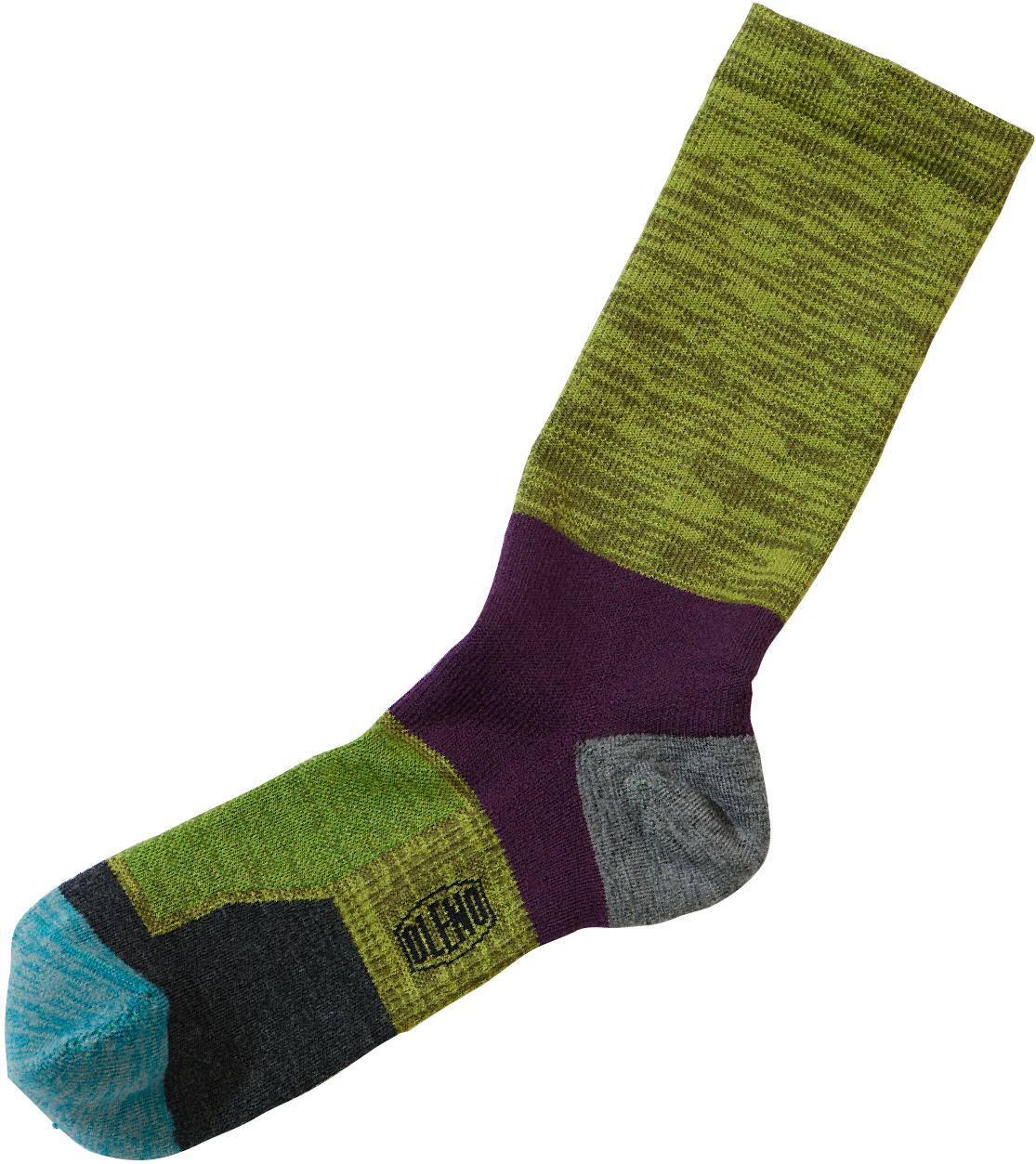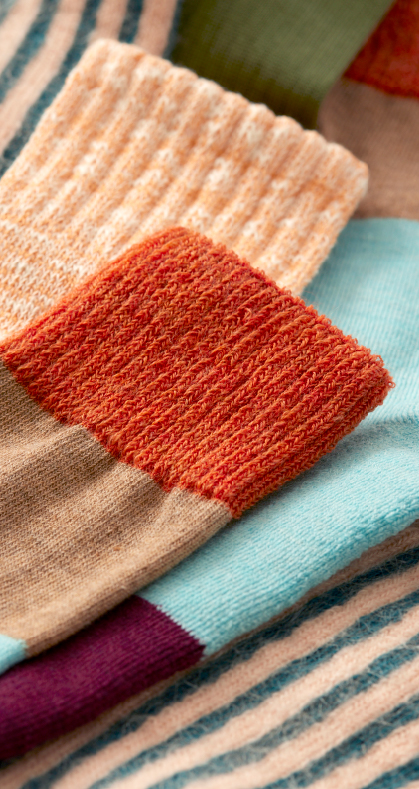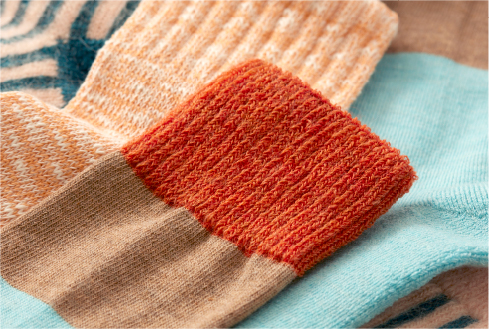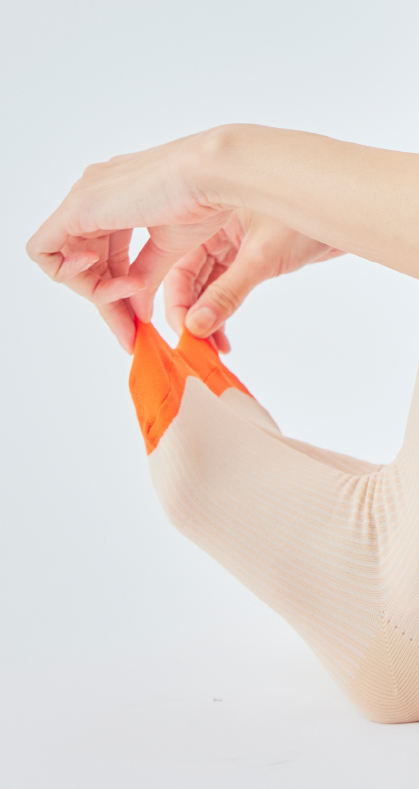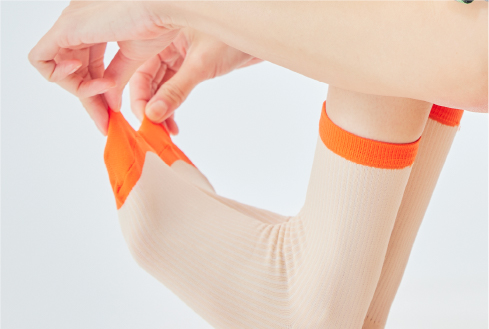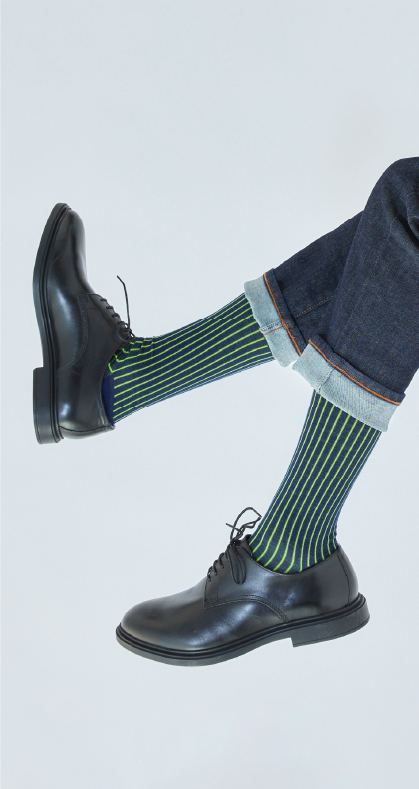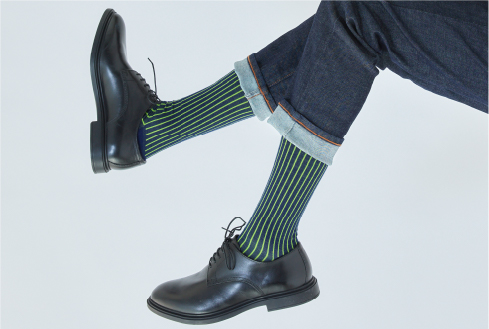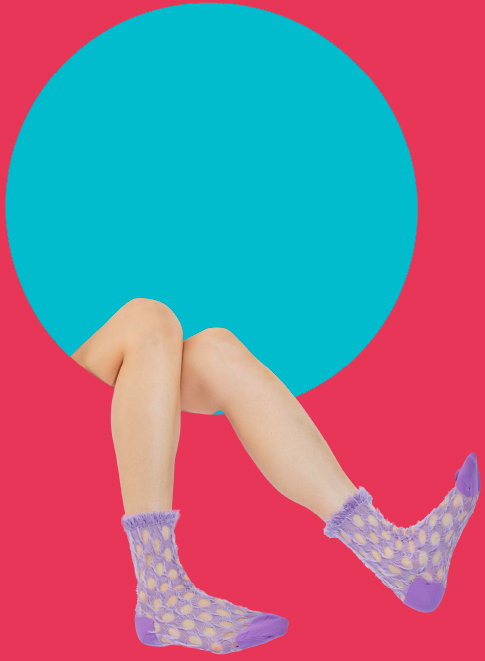


Certified sock sommeliers involved with the Koryo Socks select brand teach the key points for choosing socks that fit your body perfectly.
Certified sock sommeliers involved with the Koryo Socks select brand teach the key points for choosing socks that fit your body perfectly.
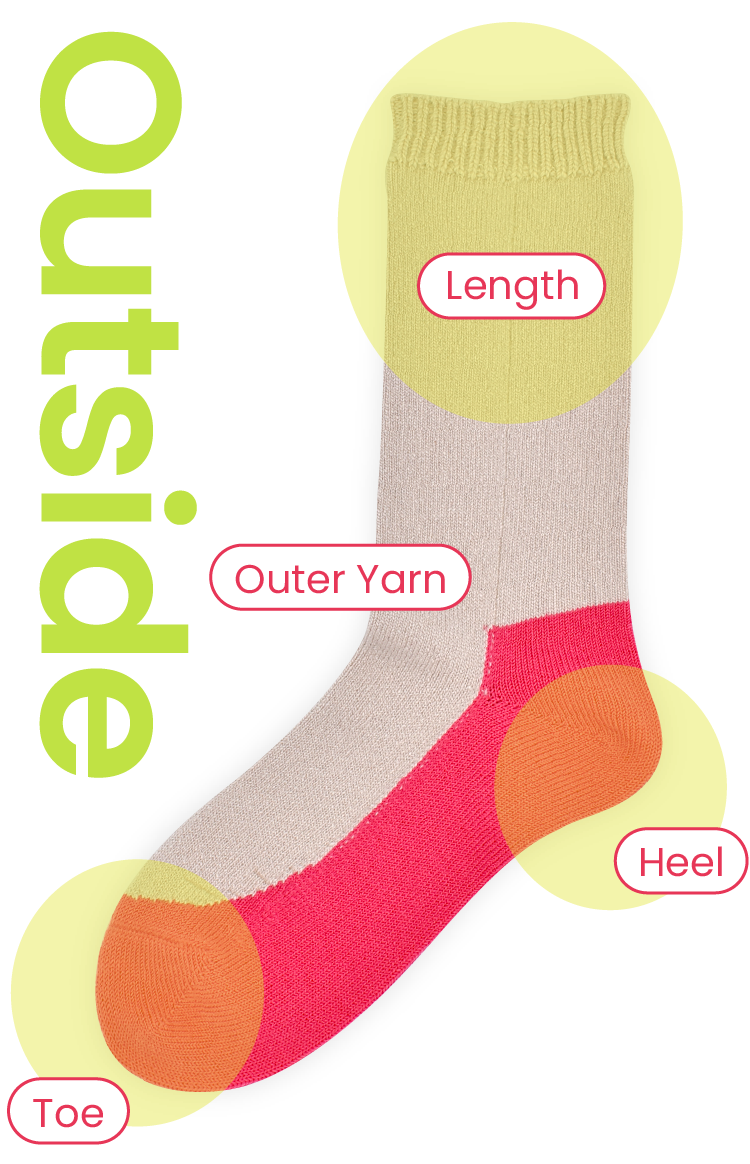


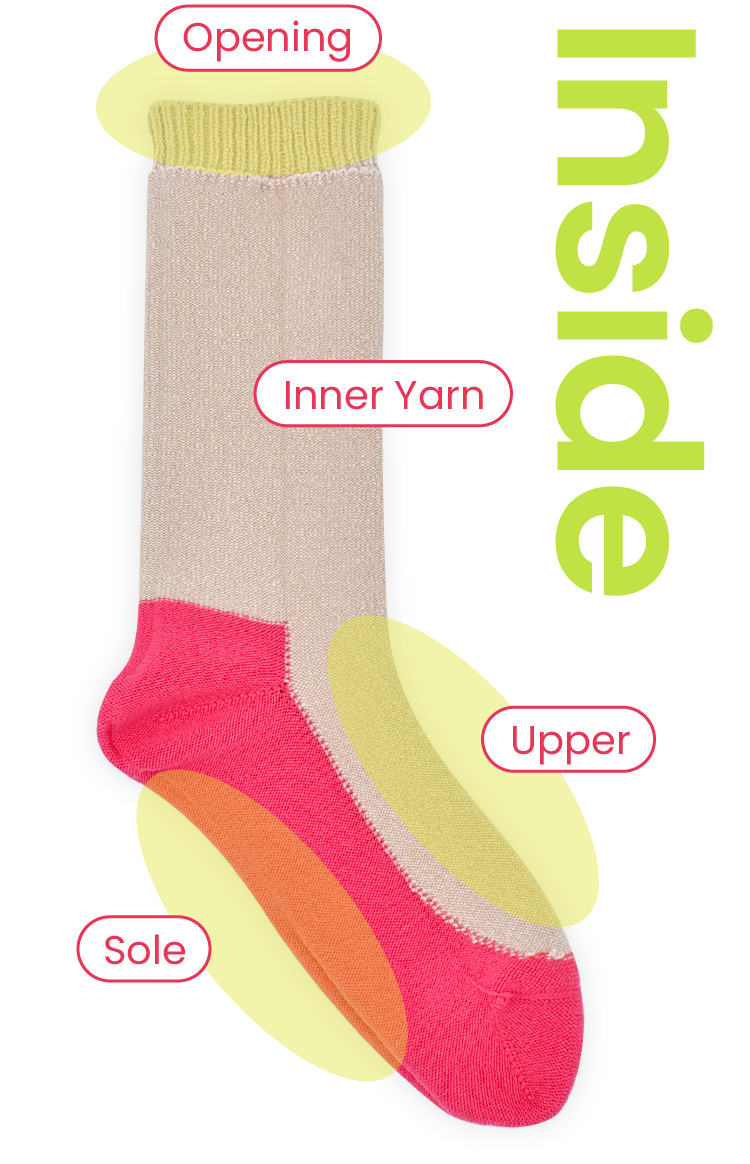
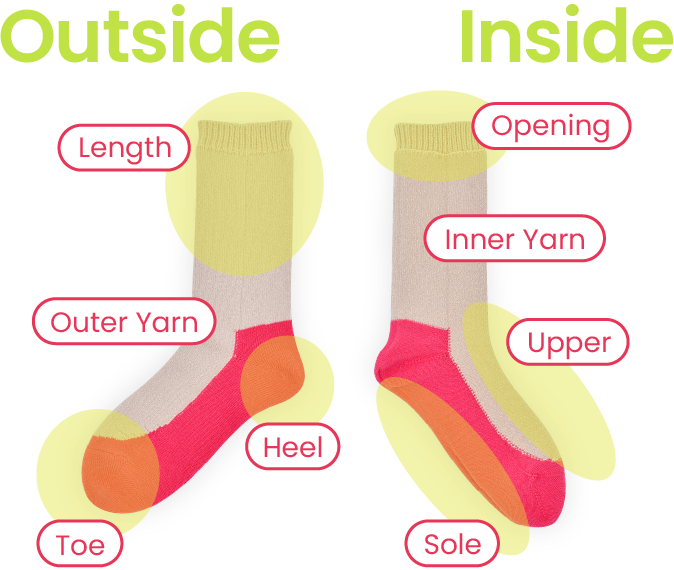
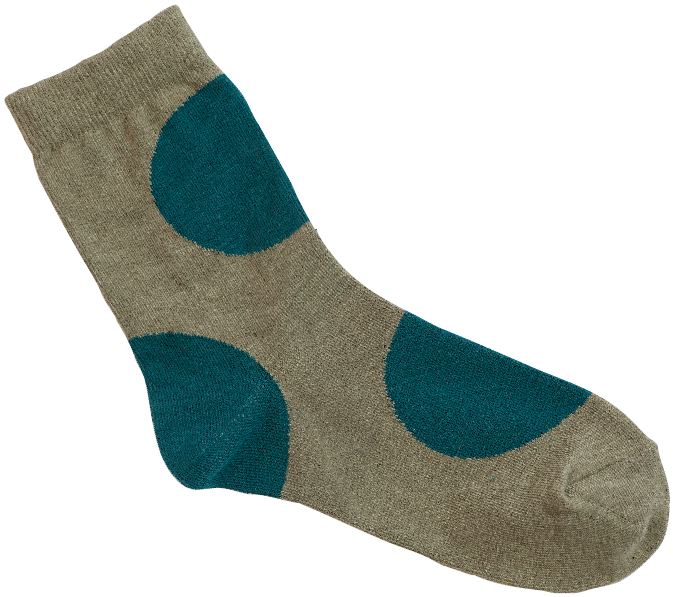
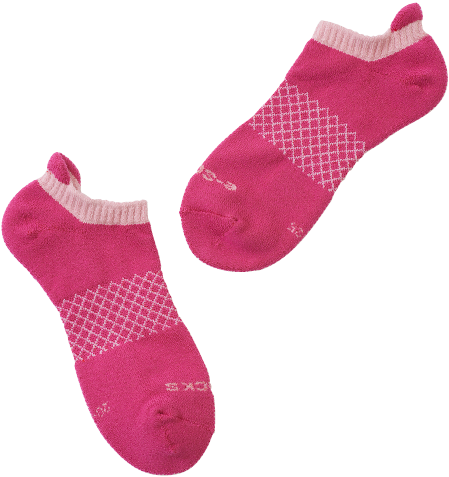
Socks are not only fashion items but also essential daily wear that affect comfort and reduce fatigue. Here are some useful tips and points to consider when choosing socks, as taught by sock sommeliers*.
*What is a Sock Sommelier? A sock sommelier is a certified professional recognized by the Japan Society for Hosiery, with extensive knowledge about sock history, production methods, techniques, and products. They accurately convey the charm and value of socks to consumers.
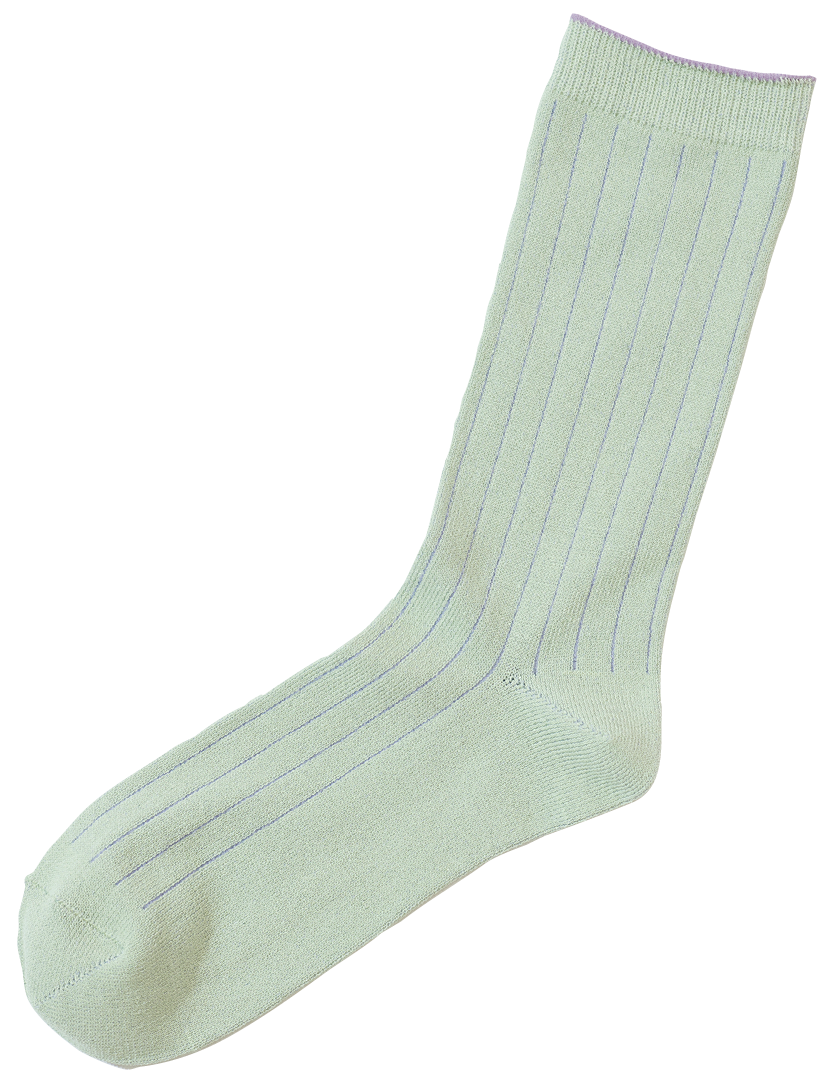

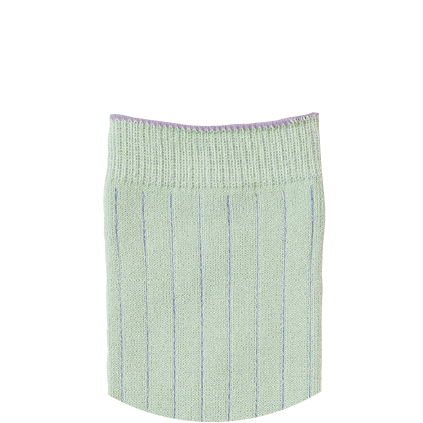
Opening(Ribbing)
The “opening” of the sock doesn’t need tight elastic to prevent slipping. Socks designed to match the taper of the leg naturally stay in place without overly tight elastic. Additionally, wide elastic bands at the opening are less likely to slip compared to narrow, tight ones, which can affect comfort and circulation.
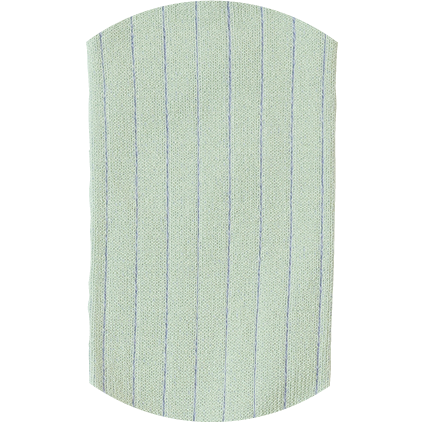
Material
Socks are made from various materials, including natural fibers like cotton, wool, and silk, and synthetic fibers like polyester, nylon, and polyurethane.
Natural fibers offer comfort and texture but require extra care and are often pricier. Synthetic fibers are functional, easy to care for, and affordable.
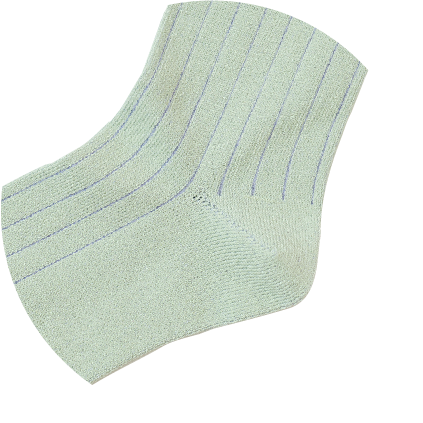
Heel
The seam inside the heel helps the sock conform to the foot’s curvature. Longer and deeper seams provide a better fit, though excessively short seams may reduce comfort.
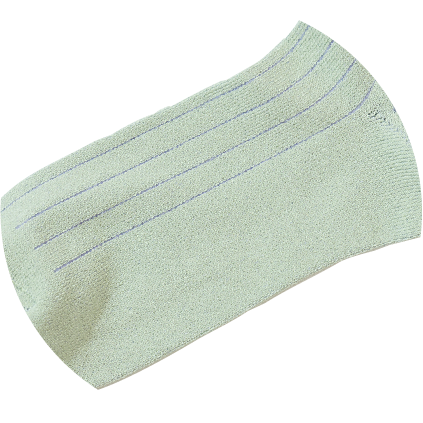
Arch
Have you seen socks with a tighter arch area? These are often used in sports socks or fatigue-reducing socks. When you get tired, the arch disappears, and the entire foot comes into contact with the ground flatly, leading to an inefficient way of walking. A supportive arch design prevents the foot from flattening during fatigue, maintaining efficient movement and reducing strain.
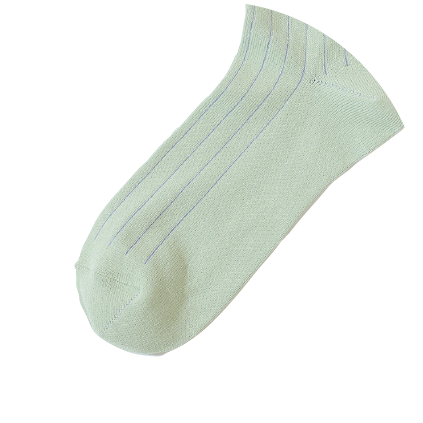
Sole
The sole is a critical area as it bears the body’s weight. It's crucial that the fabric is made with strong threads. Some products use 'pile fabric,' which has high cushioning properties and creates a layer of air, making the socks warm and comfortable.
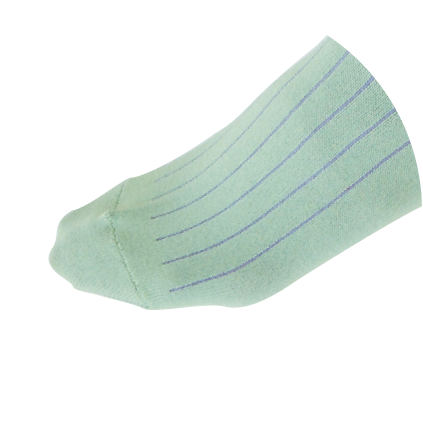
Toe
Regular socks are called 'round-shaped.' Normally, socks do not have a left or right side, but there are also socks that are asymmetrically designed to fit the shape of the foot, with the side of the big toe longer than the side of the little toe. The shape of the toe varies, with options like 'five-toe,' 'three-toe,' and 'tabi-type.' 'Five-toe' socks have the advantage of better sweat absorption and make it easier to utilize the strength of each toe.
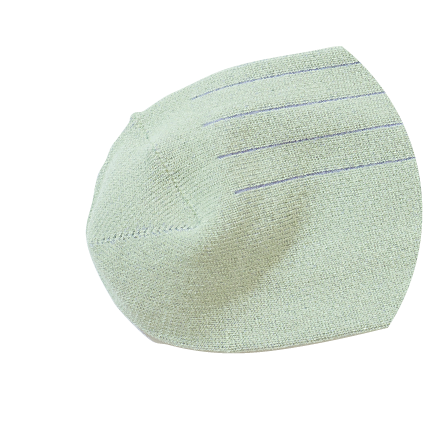
Linking
The toe area of socks is sewn together at the base of the toes. However, raised seams can cause discomfort. Hand-linked seams eliminate bumps, offering enhanced comfort. As the process is time-consuming, it is mainly used in high-end socks.
*What is a Sock Sommelier? A sock sommelier is a certified professional recognized by the Japan Society for Hosiery, with extensive knowledge about sock history, production methods, techniques, and products. They accurately convey the charm and value of socks to consumers.
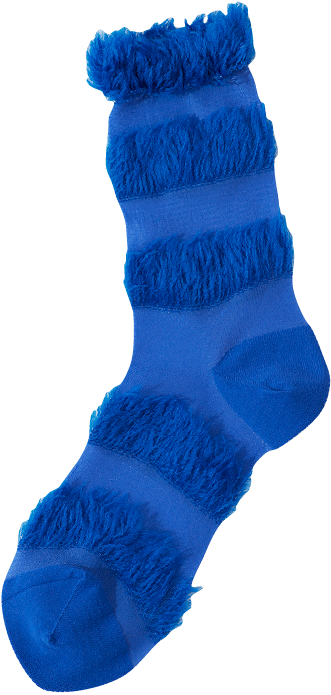
Choosing the Right Socks for You!
The quality of socks depends largely on the material and knitting technique, tailored to the wearer’s preferences and needs. Here’s how to identify “good socks” based on what you’re looking for.
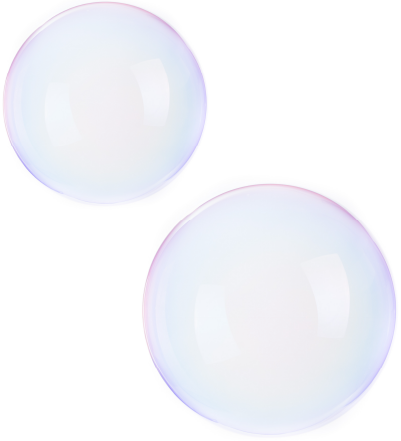
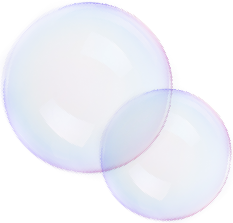
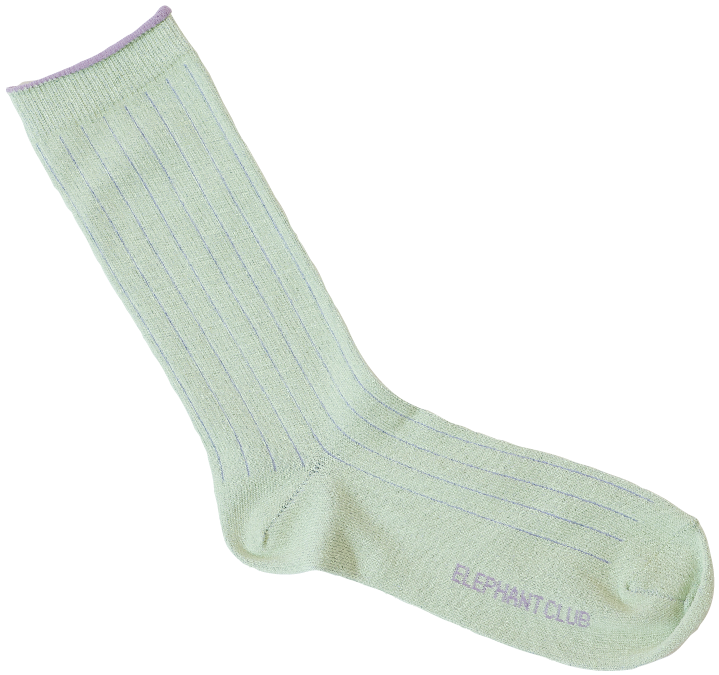
The key to washing socks is to remove the main dirt,
which is so-called foot sebum.
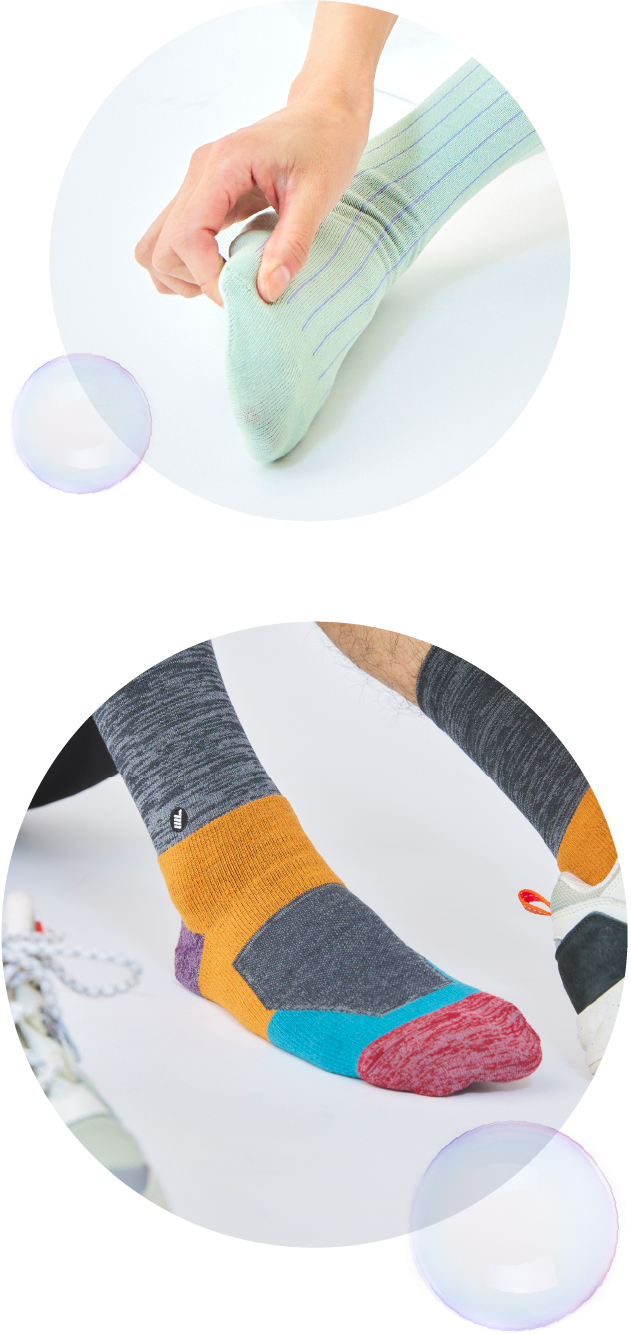

The key to washing socks is to remove the main dirt, which is so-called foot sebum.
1. Turn the socks inside out and wash them by hand.
2. If handwashing is too much trouble, turn them inside out and place them in a laundry net.
Especially for socks made from natural materials, washing them carefully can significantly extend their lifespan.
If you're really pressed for time, socks with a higher percentage of synthetic fibers like polyester are relatively more durable in the wash and dry faster, making them easier to care for.
For work socks, it's good to use easy-care synthetic fibers, while for stylish socks, natural materials are better suited. It's important to choose socks based on their intended use.
Every material has its pros and cons. By paying a little attention when purchasing, the chances of finding socks that suit you will greatly increase.
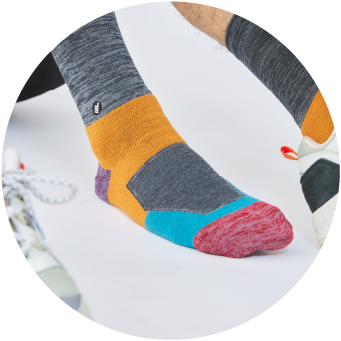
Supervised by:Toshifumi Takekawa
(Socks Sommelier No.23849)
Koryo Industrial Development Organization
